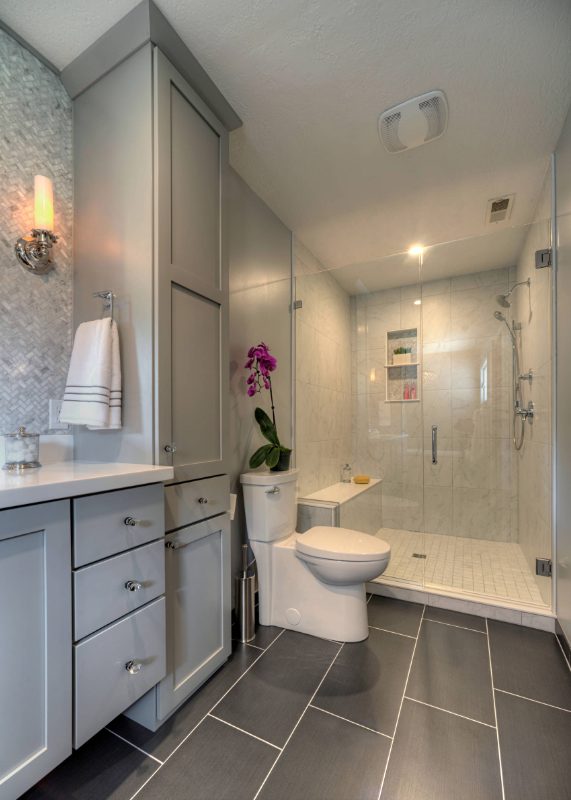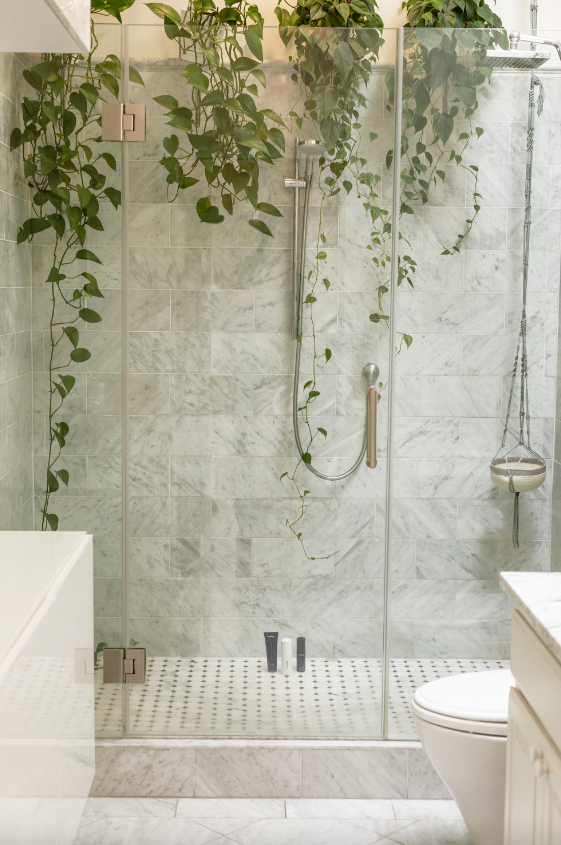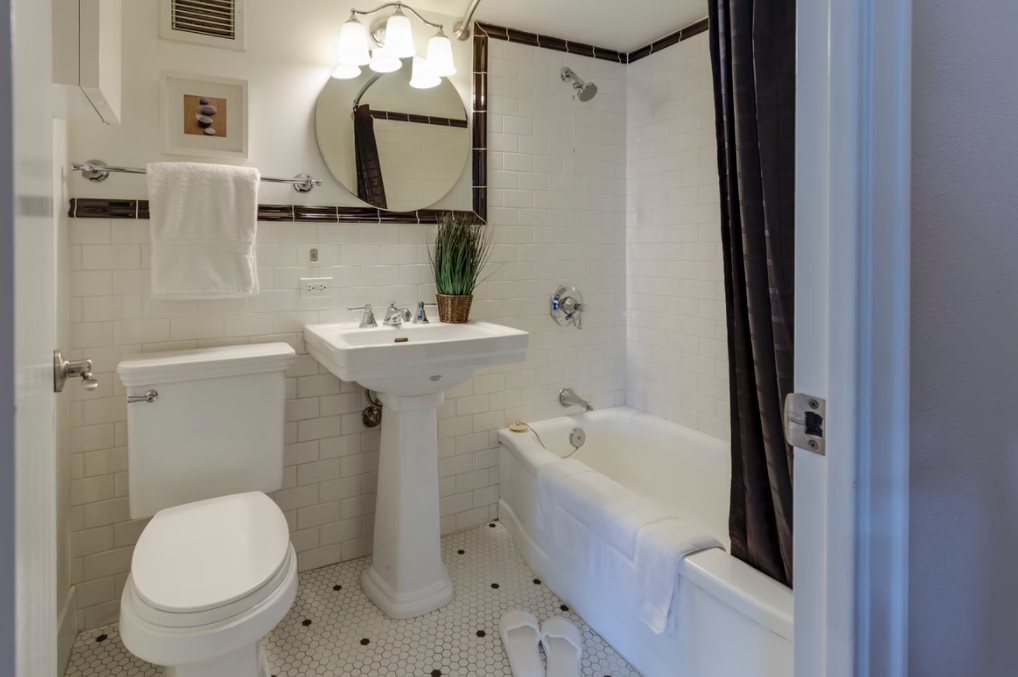Top 10 Senior-Friendly Bathroom Renovation Tips

Renovating a bathroom to be senior-friendly is key for ensuring safety, comfort, and accessibility. As we age, our mobility and physical needs change, making it important to adapt our living spaces to meet these evolving requirements.

Creating a bathroom that caters to the elderly can prevent accidents and allow for greater independence. In this blog, we will share practical tips to help you design a bathroom that is both functional and stylish, ensuring it meets the needs of senior family members.
1. Install Grab Bars
One of the most essential features in a senior-friendly bathroom is the installation of grab bars. These should be strategically placed in the shower, near the toilet, and along any other areas where extra support might be necessary. Grab bars provide stability and support for seniors who may have difficulty balancing or moving from one position to another. They are crucial for preventing falls and helping seniors maintain their independence in the bathroom. When installing grab bars, it’s important to ensure they are securely fixed to wall studs and positioned at an appropriate height for easy access.
2. Opt for a Walk-In Shower
Traditional bathtubs can pose a significant risk for slips and falls due to the need to step over high sides. A practical solution is to undertake bathroom remodeling to include the installation of a walk-in shower. This type of shower features a low or no threshold, which eliminates the need to lift legs over a barrier, significantly reducing the risk of falls. Walk-in showers can also be equipped with non-slip floors, built-in seating, and adjustable shower heads, enhancing both safety and comfort for seniors. This modification not only caters to the current needs but also adapts to future mobility changes, making it a wise long-term investment.
3. Choose Non-Slip Flooring
Flooring in a senior-friendly bathroom should prioritize safety, particularly when it comes to preventing slips. Non-slip flooring options such as textured vinyl or slip-resistant tiles are ideal because they provide a stable and secure surface. It’s important to choose flooring materials that offer good traction even when wet and are easy to clean and maintain. Additionally, the flooring should not have any loose rugs or mats that could move underfoot, as these can increase the risk of trips and falls. When selecting the flooring, consider visual factors as well; ensuring there is enough contrast with other bathroom elements to help those with impaired vision navigate the space more easily.
4. Ensure Adequate Lighting
Proper lighting in a senior-friendly bathroom is critical for safety and usability. Adequate, evenly distributed lighting can help prevent accidents by illuminating slippery surfaces and providing clear visibility of all areas. Consider installing LED lights that offer a bright, natural light without glare, which can be harsh on aging eyes. Task lighting around the mirror and ambient lighting that fills the entire room are beneficial for seniors. Lights should also be easily accessible, with switches placed at a convenient height or equipped with motion sensors or touchless technology to make turning lights on and off simpler for those with limited mobility or hand strength.
5. Adjust the Toilet Height
Comfort-height toilets, which are a few inches taller than standard toilets, can make a significant difference in the ease of use for seniors. The increased height reduces the effort needed to sit down and stand up, which can be challenging for individuals with limited mobility or joint pain. When choosing a toilet, it’s also wise to consider models with elongated seats, which provide more room and comfort. Additionally, installing a nearby grab bar can aid in the transition to and from the standing position, adding an extra layer of safety and support.
6. Include a Shower Seat
Adding a shower seat is an excellent enhancement for any senior-friendly bathroom. It provides a safe and comfortable place for seniors to sit while bathing, reducing the risk of fatigue and falls that can occur when standing for extended periods. Shower seats come in various styles, including built-in benches and fold-down seats that can be attached to the shower wall. Opting for a seat with non-slip surfaces and sturdy construction ensures maximum safety and usability. This feature not only promotes independence but also adds an element of relaxation to the bathing experience, making it enjoyable and stress-free.
7. Install Lever-Style Faucet Handles
Lever-style faucet handles are easier for seniors to operate, especially for those with limited hand strength or conditions like arthritis. These handles can be operated with a simple push or pull, eliminating the need for gripping and twisting, which can be challenging and painful. Installing lever-style handles in the sink, shower, and bathtub ensures that seniors can easily control water flow and temperature, enhancing their ability to use the bathroom independently and safely. This small change can significantly improve the functionality of the bathroom fixtures and is a thoughtful detail that can make a big difference in everyday comfort.
8. Use a Handheld Showerhead
A handheld showerhead is another practical addition to any senior-friendly bathroom. It allows users to direct the flow of water exactly where needed, making it easier to bathe while seated or without having to move too much. Handheld showerheads often come with adjustable settings to control water pressure and spray patterns, providing a customized bathing experience that can accommodate sensitive skin and personal preferences. This flexibility not only enhances safety but also ensures that seniors can maintain personal hygiene with dignity and ease.
9. Secure Bath Mats
To further prevent slips and falls, it’s important to secure bath mats with non-skid backing in critical areas such as in front of the shower, bathtub, and sink. These mats should be firmly anchored to the floor to provide a stable surface when stepping in and out of wet areas. Choosing bath mats that are soft yet durable and easy to clean will add to the safety and functionality of the bathroom. It’s essential to regularly check and maintain these mats to ensure they remain effective and safe for use.
10. Simplify Access and Storage
Ensuring that bathroom essentials are easily accessible is crucial for seniors. This involves organizing and storing toiletries, towels, and other necessities within easy reach, without the need for bending or stretching. Lower storage solutions, such as pull-out drawers and open shelving at waist height, can greatly add to accessibility. Also, consider installing a medicine cabinet with a mirrored front that serves dual purposes without requiring additional space. Simplifying access not only helps in maintaining independence but also reduces the risk of accidents caused by reaching for out-of-place items.
Conclusion
Renovating a bathroom to be senior-friendly involves thoughtful consideration of both safety and comfort. By integrating these ten tips, from installing grab bars and a shower seat to simplifying access and storage, you can create a bathroom that supports the independence and well-being of seniors. Each modification contributes to a safer and more comfortable environment, allowing seniors to feel confident and secure in their daily routines. Ultimately, these changes ensure that the bathroom remains a functional, safe, and pleasant space for aging individuals, reinforcing their quality of life and peace of mind.








